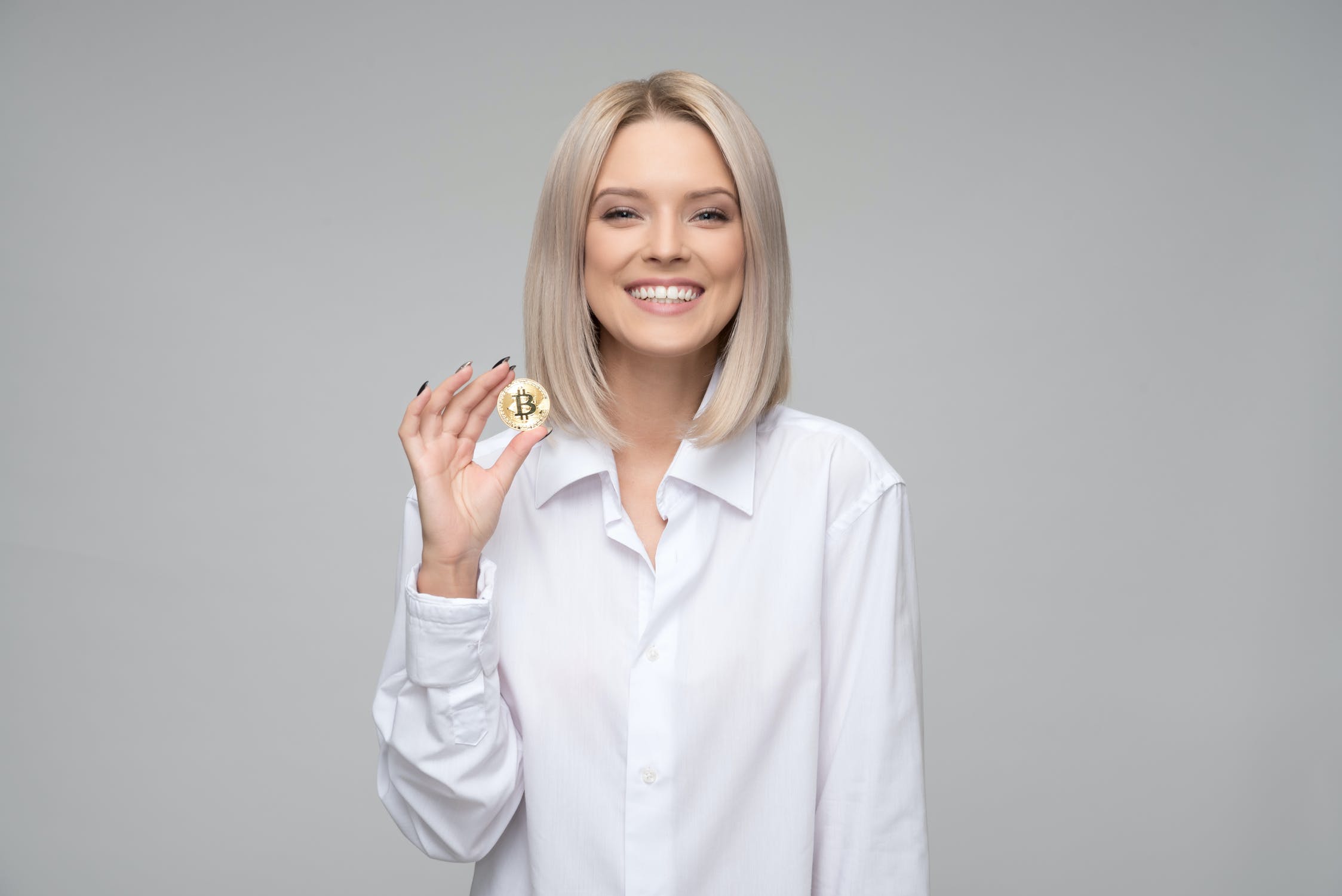Comments
- No comments found

Could Bitcoin form part of a family’s legacy the way collectible art, jewellery, classic cars and real estate have?
At the reading of the last will and testament of Timothy Calderon Smith (a.k.a toophunkcypher) in the year 2104, his descendants listened disinterested as the estate lawyer rattled off a list of possessions that Smith had acquired throughout his long life.
“One, painting by Picasso, entitled Girl before a mirror, I bequeath to…”
the lawyer droned on.
Until finally, he came to the part that everyone sat up for,
“And for my holdings of cryptocurrencies, 10,045.4678 Bitcoin I bequeath to…”
There were audible gasps in the lawyer’s office.
At the back of the room, one of Smith’s great-granddaughters had fainted and a secretary rushed to bring her a glass of water.
True, this may be fiction, but it could also be the future. A future when digital legacies matter more than physical ones.
As Bitcoin shot past US$61,000 this month, wealth managers who had for years dismissed the nascent asset class were having to field inquiries from their clients as to what the “Bitcoin solution” was for their portfolios.
The only problem? Most of them didn’t have a plan.
Dismissed for years as being too speculative and too volatile to form a part of a complete and healthy asset portfolio, the dynamics have changed dramatically for Bitcoin.
From companies like Square, Tesla and MicroStrategy, all putting a portion of their treasure in Bitcoin, to billionaire hedge fund investors such as Stanley Druckenmiller and Paul Tudor Jones touting Bitcoin’s value as a hedge against inflation, many are wondering if their portfolios wouldn’t benefit with just a small dose of Bitcoin.
To that end, Bitcoin can be considered a type of Veblen good — a luxury good for which the demand for it increases as the price increases and key to that quality in Bitcoin is programmatic scarcity.

At its core, Bitcoin is limited by its software code to 21 million Bitcoins — the maximum number of Bitcoin that will ever exist.
But if Bitcoin is digital money, how can you ever limit the total number of Bitcoins? After all, don’t programmers often edit software code?
Therein lies the magic in Bitcoin — because Bitcoin works on a decentralised ledger — millions of computers scattered across the world working to confirm transactions and secure the blockchain that Bitcoin is riding atop, changes to Bitcoin require consensus.
Baked into Bitcoin is an ingenious governance system where certain changes, of which the maximum number of Bitcoin that can ever be “mined” is limited to 21 million Bitcoins is one of them, require the consensus of participants to effect.
Even if every single participant in the Bitcoin ecosystem, including every core developer, miner and holder of Bitcoin were to agree to increase the maximum number of Bitcoins, in theory, whatever resulted from that (highly unlikely) unanimous consensus, couldn’t even really be called Bitcoin anymore, as it would have diverged too much from its original design and intent.
Developed out of the theories of U.S. economist Thorstein Veblen who saw the value in conspicuous consumption, Veblen saw that prices of certain goods could move higher because this made their value more conspicuous in the eyes of the beholder.
And that helps to explain (at least in part) why high-profile announcements of large investments in Bitcoin by celebrated personalities, help to push Bitcoin’s price higher.
Because Bitcoin is pseudonymous, using listed corporate vehicles to buy Bitcoin is essential to raising its stature as a Veblen good — compulsory regulatory disclosures reveal who actually has Bitcoin on their balance sheets and who’s pretending.
And as more investors clamor for Bitcoin, its price increases.
But can it form part of a family’s portfolio, passed down from generation to generation?
Discovering new asset classes is generally a rare occurrence, but not without precedent.
In 1933 then U.S. President Franklin Roosevelt, fixed the price of gold at US$35.00 an ounce.
But by the early 70s, the historic post-war Bretton Woods agreement, which sought to create an international monetary system that would prevent competitive currency devaluations and promote economic growth, was starting to unravel.
By the start of 1971, gold’s price hadn’t changed much, at US$37.44 per ounce, just before the U.S. abandoned the gold standard — where a dollar was backed by its equivalent value in gold.
And even when the U.S. abandoned the gold standard, investing in gold would still be considered illegal until 1974, when investors could buy COMEX gold futures.
Availability of a gold investment vehicle saw the price of gold skyrocket.
By the end of 1974, the price of gold had shot up by over 500% to US$184, before losing almost half its value in a two-year bear market immediately thereafter.
But investors with “diamond hands” who were shaken out by that first correction would have been vindicated, with gold rising some 541% by the end of the decade to US$850 by January 1980, a record rally that would not be repeated for the next 25 years.
And from the mid-70s to the early 80s, the popularity of gold grew, with the nascent asset class becoming more widely available through brokerages and retail-oriented products.
By the mid-80s, baby boomers steadily added gold to their investment portfolios, with its “institutionalisation” spurred on by the same anti-inflation, rampant central bank money growth narrative that’s now being applied to Bitcoin.
And by 1989, gold had completed its 18-year transition from a new asset, to a recognised part of an institutional portfolio.
During that period, the dynamics, volatility and correlations for gold and other asset classes evolved and matured, with gold consistently and predictably moving inversely with the trade-weighted U.S. dollar and U.S. real interest rates.
It already has.
Just three years ago, many of the institutional services that are necessary to support investment in Bitcoin barely existed, and if they did, came at an exorbitant price.
From custodians to auditors, fund administrators to lawyers, the service layer for institutional participation in Bitcoin has caught up and investors have an increasing number of options beyond just purchasing shares in Grayscale Bitcoin Trust.
From exchange-traded funds in Canada, to Bitcoin structured products on Swiss exchange SIX, investors are now knocking on the door of the U.S. Securities and Exchange Commission and hopes are high that a U.S. Bitcoin ETF will be approved as early as this year, providing retail investors with a secure and convenient way to buy Bitcoin the way they buy gold.
With a full business cycle, and over 12 years’ worth of history, there is now more data than ever for Bitcoin, with analysts from Morgan Stanley noting that Bitcoin has a modest three-year trailing correlations with other major portfolio asset classes.
And given the rising correlations that many asset classes have shown with mega-cap tech stocks, Bitcoin provides some degree of portfolio diversity, especially when many portfolios are passively overweight on tech and when bonds have faltered in their diversification properties as Treasuries become increasingly prone to rising underlying interest rates.
A recent study published by the CFA Institute Research Foundation in January found that the median 2.5% allocation of Bitcoin to a 60/40 equities and bond portfolio over a rolling three-year window (between January 2014 and September 2020) increased total portfolio returns by 15% cumulatively.
Portfolio risk-reward was also improved, with the Sharpe ratio (a measure of trading risk for returns) improving by 41% on average.
And a Morgan Stanley study over the same period, which was taken to deliberately to exclude the most recent exponential surge in the price of Bitcoin, saw that same 2.5% allocation in Bitcoin in a typical 60/40 equities and bond portfolio improve annualised returns by 1.64%.

Volatility in Bitcoin is critical when considering it as part of a portfolio asset. Twenty percent moves are relatively common for Bitcoin, and it has experienced four crashes of over 80% in the past decade, with 16 crashes of over 30% in that same period.
Even over the past year, when Bitcoin surged some tenfold from its low in March 2020, average monthly volatility was as much as three times that of the S&P 500 and the Nasdaq Composite.
Over short time frames, it’s hard to predict how well Bitcoin fits into a tactically managed portfolio, especially if that portfolio needs to pay out regular returns to its beneficiaries, which is not uncommon in some family office mandates.
But in the long run, where generational wealth is concerned, there may be something to Bitcoin.
First, the broader adoption of digital payments and contactless business models are likely to prove durable. Millennials have no qualms about using digital forms of money and have shown a willingness to value digital goods and services.
The coronavirus pandemic has accelerated the trend towards digitalisation and even older generations who may have been reticent to use digital money, have been forced to get comfortable quickly.
Second, a surge in liquidity has driven traditional asset classes to what some have termed “fully valued” in a historical context — meaning that their upside potential may be capped. Whereas the nascent quality of Bitcoin skews the risk-reward ratio towards taking a risk on the cryptocurrency.
Given that Bitcoin is an unconstrained asset, it’s quality as a Veblen good lends itself well to competing narratives and provides sufficient speculative scope to rally higher.
Third, there is an ever-diminishing list of diversifying and uncorrelated assets, of which Bitcoin is one of a handful, which includes art, classic cars and other collectibles.
As more money chases the same number of assets, correlations increase, meaning that there are fewer portfolio diversifiers that could act as a modulating force.
Finally, not only has the rampant, unprecedented and unconstrained global central bank money-printing fuelled the fortunes of most financial assets, the backdrop of negative real yields for both cash and debt, has raised the spectre of long run debasement of fiat currencies, a structural punishment for savers.
Consider that one out of every four U.S. dollars in circulation was created in the past year and it’s not hard to see how inflation is not only an aspiration for central banks, it may be the only antidote to the quagmire of staggering levels of government debt.
There’s a reason that family offices choose to hold significant holdings in real estate, and other treasures, to ensure something remains for subsequent generations and to avoid the dissipation of wealth.
As part of a complete and holistic review of asset allocation, a consideration of Bitcoin is not only responsible, it has of late become a necessity.
The same way that the landed gentry and then the colonists generated tremendous wealth by staking their claim over broad swathes of land, investors have the once-in-a-lifetime opportunity to secure their family’s longer-term legacy through the consideration of an investment in Bitcoin.
Patrick is an innovative entrepreneur and a lawyer passionate about cryptocurrencies and the business world. He is the CEO of Novum Global Technologies, a cryptocurrency quantitative trading firm. He understands the business concerns of founders and business people helping them to utilise the legal framework to structure their companies to take advantage of emerging technologies such as the blockchain in order to reach greater heights. His passion for travel, marketing and brand building has led him across careers and continents. He read law at the National University of Singapore and graduated with Honors in the Upper Division and joined one of Singapore’s top law firms, Allen & Gledhill where he was called to the Singapore Bar as an Advocate & Solicitor in 2005. He created Purer Skin, a skincare and inner beauty company which melds the traditional wisdom of ancient Asian ingredients such as Bird's Nest with modern technology. In 2010, his partner and himself successfully raised $589,000 from the National Research Foundation of Singapore under the Prime Minister’s Office. He has played a key role in the growth of Purer Skin from 11 retail points in Singapore to over 755 retail points in Singapore and 2 overseas in less than a year. He taught himself graphic design, coding, website design and video editing to create the Purer Skin brand and finished his training at a leading Digital Media Company.
Leave your comments
Post comment as a guest